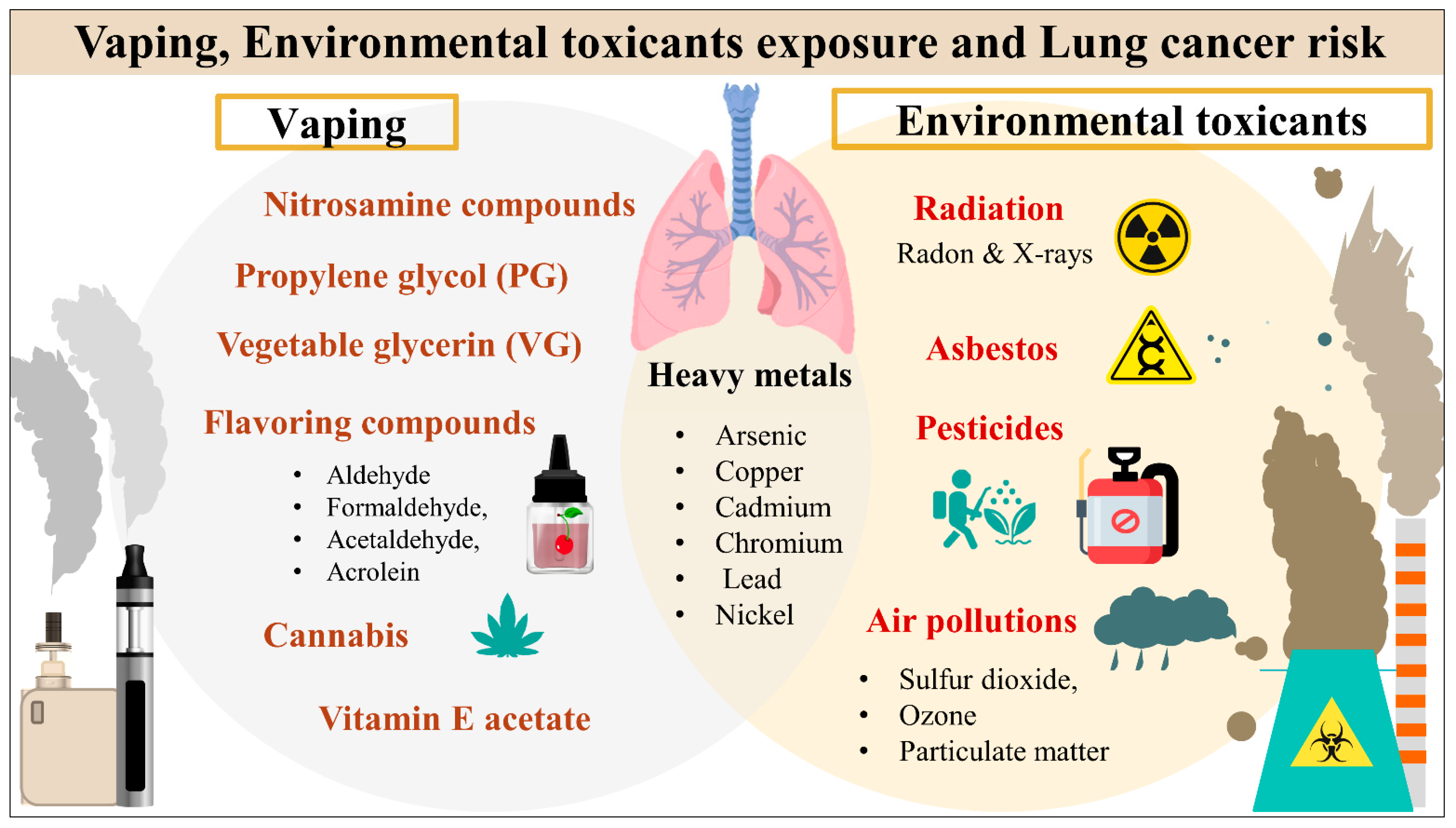Electronic Cigarettes and Cancer Risk
While electronic cigarettes (e-cigarettes or vapes) are often considered less harmful than combustible tobacco cigarettes, they are not risk-free and do present potential cancer risks. The current scientific understanding indicates a complex picture.
Exposure to Carcinogenic and Toxic Substances:

- E-cigarette aerosol is not simply water vapor; it can contain several potentially carcinogenic compounds. These include formaldehyde, acetaldehyde, and acrolein, which can form when the e-liquid solvents (propylene glycol and vegetable glycerin) are heated to high temperatures.
- Many e-liquids contain various flavoring chemicals. While some are safe for ingestion, their effects when heated and inhaled are not fully known, and some have been shown to degrade into toxic or irritating compounds, with some having carcinogenic potential.
- Trace amounts of heavy metals, such as nickel, tin, and lead, have been detected in e-cigarette aerosol. These can leach from the heating coil and other components of the device. Several of these metals are known human carcinogens.
- Other harmful substances, including volatile organic compounds (VOCs) like benzene (a known carcinogen), have also been found in some e-cigarette emissions.
The Role of Nicotine:
- Nicotine itself is highly addictive but is not considered a primary direct carcinogen in the same way as many chemicals in tobacco smoke. However, some research suggests that nicotine may promote tumor growth and progression by affecting cell proliferation, angiogenesis (the formation of new blood vessels that tumors need to grow), and cell death. Its role in cancer initiation is less clear.
Long-term Evidence and Research Status:
- Widespread use of e-cigarettes is relatively recent (dating primarily from the late 2000s). Since most cancers take many years or even decades to develop after exposure to carcinogens, long-term epidemiological studies that definitively link e-cigarette use to cancer in humans are still limited.
- Current research, including laboratory studies on cells (in vitro) and animals (in vivo), has shown that e-cigarette aerosol can cause DNA damage, oxidative stress, and inflammation, all of which are biological processes that can contribute to cancer development. However, directly extrapolating these findings to human cancer risk requires more time and human-based studies.
Current Scientific and Public Health Consensus:
- Most public health organizations acknowledge that for adult smokers who completely switch from combustible cigarettes to e-cigarettes, there is likely a reduction in exposure to many of the harmful toxicants and carcinogens that cause smoking-related cancers.
- However, “reduced risk” does not mean “no risk.” E-cigarettes still expose users to harmful substances, and their use is not recommended for non-smokers, especially youth, young adults, and pregnant women, due to the risks of nicotine addiction, exposure to toxicants, and potential unknown long-term health effects.
In conclusion, while e-cigarettes likely pose a lower cancer risk than traditional combustible cigarettes, they are not harmless. They contain and emit substances that are known or suspected to cause cancer. The full extent of their long-term cancer risk in humans is still under active investigation and will become clearer as more long-term studies are completed. Therefore, they cannot be considered safe from a cancer perspective.








